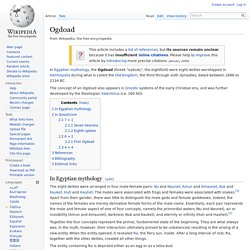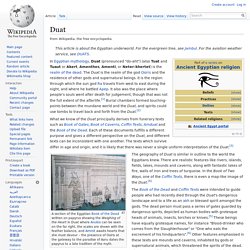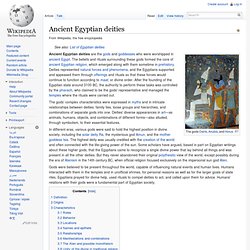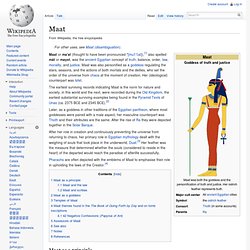

Ancient Egyptian religion. Ancient Egyptian religion was a complex system of polytheistic beliefs and rituals which were an integral part of ancient Egyptian society.

It centered on the Egyptians' interaction with many deities who were believed to be present in, and in control of, the forces and elements of nature. The practices of Egyptian religion were efforts to provide for the gods and gain their favor. Formal religious practice centered on the pharaoh, the king of Egypt. Although a human, the Pharaoh was believed to be descended from the gods.
He acted as the intermediary between his people and the gods, and was obligated to sustain the gods through rituals and offerings so that they could maintain order in the universe. Individuals could interact with the gods for their own purposes, appealing for their help through prayer or compelling them to act through magic. The religion had its roots in Egypt's prehistory and lasted for more than 3,000 years.
Theology Deities Associations between deities Atenism Writings. Ogdoad. In Egyptian mythology, the Ogdoad (Greek "ογδοάς", the eightfold) were eight deities worshipped in Hermopolis during what is called the Old Kingdom, the third through sixth dynasties, dated between 2686 to 2134 BC.

In Egyptian mythology[edit] Duat. This article is about the Egyptian underworld.

Egyptian pantheon. The gods' complex characteristics were expressed in myths and in intricate relationships between deities: family ties, loose groups and hierarchies, and combinations of separate gods into one.

Deities' diverse appearances in art—as animals, humans, objects, and combinations of different forms—also alluded, through symbolism, to their essential features. In different eras, various gods were said to hold the highest position in divine society, including the solar deity Ra, the mysterious god Amun, and the mother goddess Isis. The highest deity was usually credited with the creation of the world and often connected with the life-giving power of the sun. Some scholars have argued, based in part on Egyptian writings about these higher gods, that the Egyptians came to recognize a single divine power that lay behind all things and was present in all the other deities.
Gods were believed to be present throughout the world, capable of influencing natural events and human lives. Definition[edit] Maat. The earliest surviving records indicating Maat is the norm for nature and society, in this world and the next, were recorded during the Old Kingdom, the earliest substantial surviving examples being found in the Pyramid Texts of Unas (ca. 2375 BCE and 2345 BCE).[2] Later, as a goddess in other traditions of the Egyptian pantheon, where most goddesses were paired with a male aspect, her masculine counterpart was Thoth and their attributes are the same.

After the rise of Ra they were depicted together in the Solar Barque. After her role in creation and continuously preventing the universe from returning to chaos, her primary role in Egyptian mythology dealt with the weighing of souls that took place in the underworld, Duat.[3] Her feather was the measure that determined whether the souls (considered to reside in the heart) of the departed would reach the paradise of afterlife successfully. Maat as a principle[edit] Winged Maat. Thoth. Thoth played many vital and prominent roles in Egyptian mythology, such as maintaining the universe, and being one of the two deities (the other being Ma'at) who stood on either side of Ra's boat.[5] In the later history of ancient Egypt, Thoth became heavily associated with the arbitration of godly disputes,[6] the arts of magic, the system of writing, the development of science,[7] and the judgment of the dead.[8] Name[edit] Etymology[edit] The Egyptian pronunciation of ḏḥwty is not fully known, but may be reconstructed as *ḏiḥautī, based on the Ancient Greek borrowing Θώθ [tʰɔːtʰ] Thōth or Theut and the fact that it evolved into Sahidic Coptic variously as Thoout, Thōth, Thoot, Thaut as well as Bohairic Coptic Thōout.

According to Theodor Hopfner,[12] Thoth's Egyptian name written as ḏḥwty originated from ḏḥw, claimed to be the oldest known name for the Ibis although normally written as hbj. Further names and spellings[edit] Depictions[edit] Attributes[edit] Seshat. In Egyptian mythology, Seshat (also spelled Safkhet, Sesat, Seshet, Sesheta, and Seshata) was the Ancient Egyptian goddess of wisdom, knowledge, and writing.

She was seen as a scribe and record keeper, and her name means she who scrivens (i.e. she who is the scribe), and is credited with inventing writing. She also became identified as the goddess of architecture, astronomy, astrology, building, mathematics, and surveying. These are all professions that relied upon expertise in her skills. She is identified as Safekh-Aubi in some late texts.[6] In art, she was depicted as a woman with a seven-pointed emblem above her head.